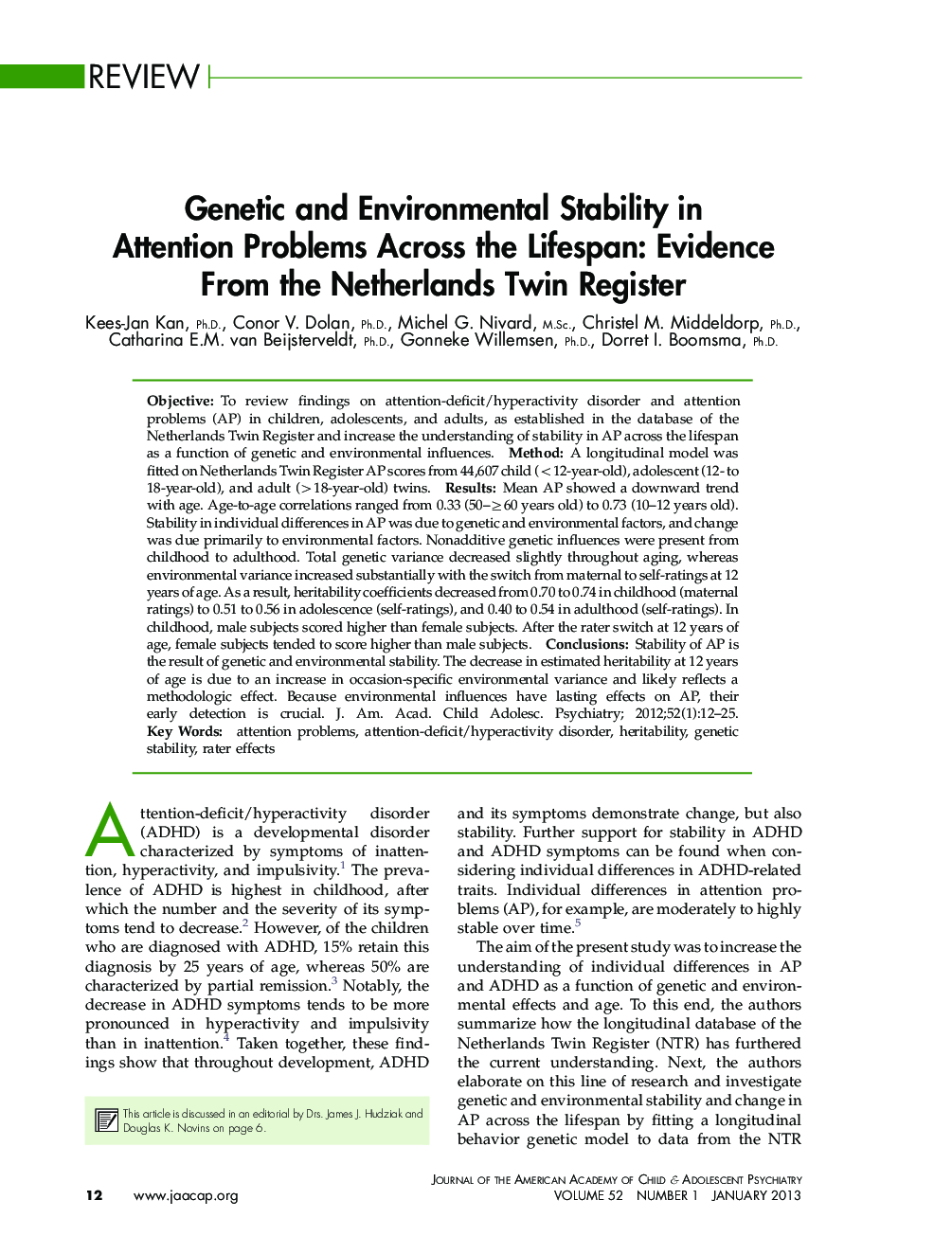| Article ID | Journal | Published Year | Pages | File Type |
|---|---|---|---|---|
| 324608 | Journal of the American Academy of Child & Adolescent Psychiatry | 2013 | 14 Pages |
ObjectiveTo review findings on attention-deficit/hyperactivity disorder and attention problems (AP) in children, adolescents, and adults, as established in the database of the Netherlands Twin Register and increase the understanding of stability in AP across the lifespan as a function of genetic and environmental influences.MethodA longitudinal model was fitted on Netherlands Twin Register AP scores from 44,607 child (<12-year-old), adolescent (12- to 18-year-old), and adult (>18-year-old) twins.ResultsMean AP showed a downward trend with age. Age-to-age correlations ranged from 0.33 (50–≥60 years old) to 0.73 (10–12 years old). Stability in individual differences in AP was due to genetic and environmental factors, and change was due primarily to environmental factors. Nonadditive genetic influences were present from childhood to adulthood. Total genetic variance decreased slightly throughout aging, whereas environmental variance increased substantially with the switch from maternal to self-ratings at 12 years of age. As a result, heritability coefficients decreased from 0.70 to 0.74 in childhood (maternal ratings) to 0.51 to 0.56 in adolescence (self-ratings), and 0.40 to 0.54 in adulthood (self-ratings). In childhood, male subjects scored higher than female subjects. After the rater switch at 12 years of age, female subjects tended to score higher than male subjects.ConclusionsStability of AP is the result of genetic and environmental stability. The decrease in estimated heritability at 12 years of age is due to an increase in occasion-specific environmental variance and likely reflects a methodologic effect. Because environmental influences have lasting effects on AP, their early detection is crucial.
